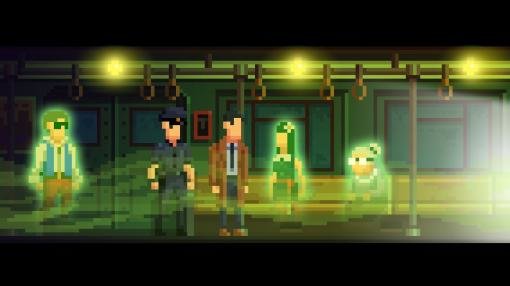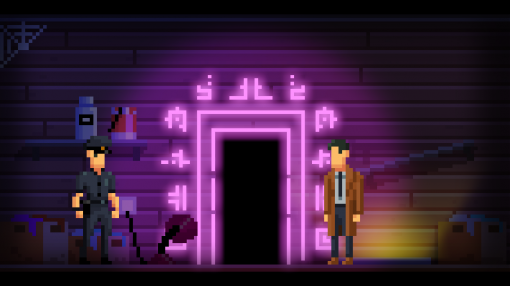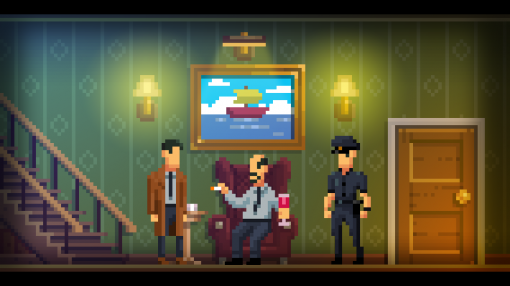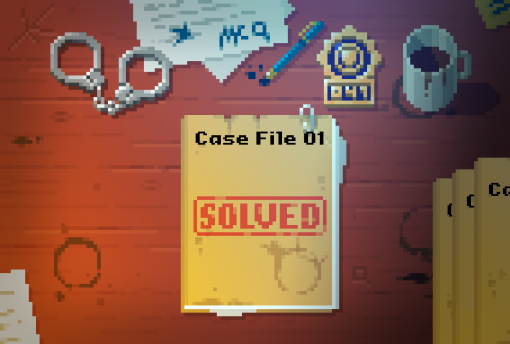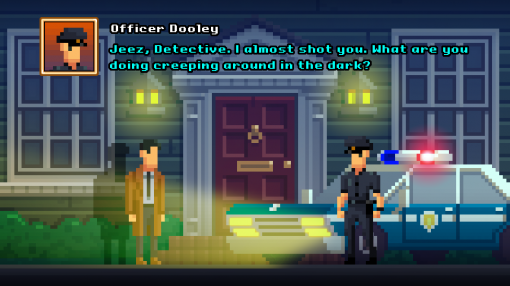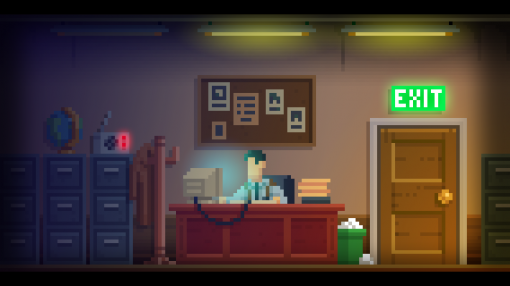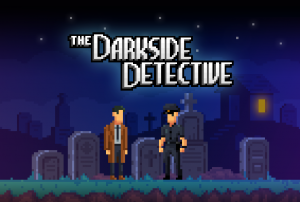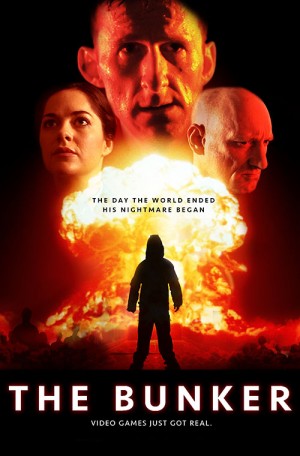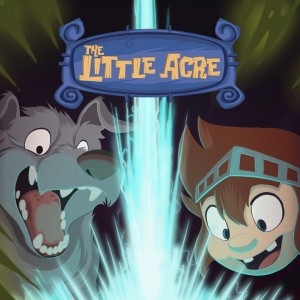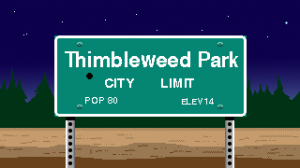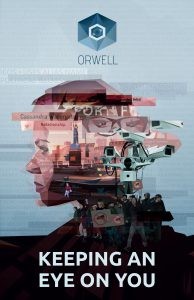Paul Conway, Dave McCabe – The Darkside Detective interview
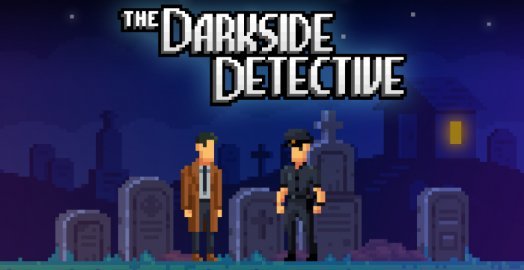
Being a detective is a tough job. But being a paranormal investigator opens up a whole new (other)world of problems. This is the multidimensional challenge in the recently-released The Darkside Detective, a retro-styled point-and-click adventure from indie Irish studio Spooky Doorway. With six different occult cases to solve, Detective Francis McQueen and Officer Dooley will have their work cut out for them as they confront evil in many forms throughout Twin Lakes City, and do it all with their sense of humour intact. Intrigued by the playable demo available, I caught up with the game’s artist, Paul Conway, and writer, Dave McCabe, on Skype to discuss their humorous new supernatural mystery in greater detail.
Ivo Teel: I really appreciate you both taking the time to talk to Adventure Gamers about The Darkside Detective. I can imagine it being hectic so close to the launch!
Dave McCabe: Yeah, it’s a bit crazy. There is always that little secret bug that we weren't aware of, but we’re getting there. Lots of administration with all the different stories and a lot of testing involved.
Ivo: It would be great for readers that haven’t heard of The Darkside Detective or have only seen it passing to know what the game is about and who Francis McQueen is. Can you give a short intro to the game and the story?
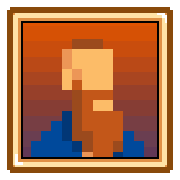 |
Dave McCabe, Darkside Detective-style! |
Dave: Okay, Darkside Detective is a point-and click-adventure game that takes place in the city of Twin Lakes. It’s sort of reminiscent of the games of the ‘90s; we use a lot of the same kind of thing. Instead of having a big long story, we’ve kind of taken the TV episodic approach: six different cases. Each works as a different type of case, different monster of the week if you will.
It’s all about the strange things that are happening in the city. It’s sort of an average suburban town, but there’s all these strange things going on. The inhabitants seem to be oblivious to it, except for Francis McQueen and a handful of other people who you meet throughout the game.
He is head of the Darkside Division; he is the Darkside Detective and that’s who you play as you go around trying to find out what strange things are happening and put an end to them. As you do so, you are accompanied by Officer Patrick Dooley, who is sort of your sidekick and friend and absolutely no help whatsoever.
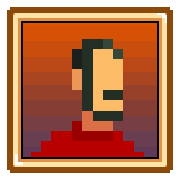 |
Pixeled Paul Conway |
We popped out the demo online and we got all these positive reactions to it, so we kind of decided to maybe roll with it more. So we worked on a bigger demo and Dave came on board literally weeks after we sent out the original crappy demo. He came in and improved the story and the characters and the bigger demo went out on Game Jolt and started getting 10.000s of followers and plays so we decided we really wanted to try and do a full game.
Tracey [McCabe] came on board then as our lead developer, to help push a lot of the tech; it’s evolved a lot. It’s a long process; we were trying to squeeze the game out in our spare time. That time actually helped build the game more; if we would have gotten it out in a few months it wouldn’t have been the game it is now, this formed, this rich. We went from this small independent game to this really deep, larger amount of characters. Want to chime in there, Dave?
Dave: Yeah, definitely with the time we had to work… I mean you can condense that and say maybe there’s X number of months or maybe one big year of actual work. But the total time we had, not working on it full time, meant that… myself and Tracey, we got married and we started traveling a bunch – Europe, Southeast Asia, US and other places. We met a lot of people along the way. None of them specifically made it into the game, but meeting a really wide bunch of people with fun personalities gave me more raw material to inject into the game.
Obviously seeing and checking out a wide range of places put different ideas of locations in our heads, and how we used them and so on. So definitely the world itself is a lot richer thanks to that time and has a lot more scope. Overall it definitely benefitted in a number of ways.
Ivo: If you look back to the beginning, how did the original idea/concept really emerge for The Darkside Detective?
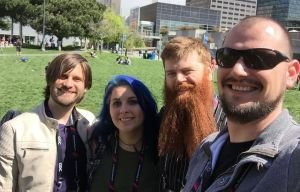 |
The real Spooky Doorway team (L-R): Ben Prunty, Tracey McCabe, Dave and Paul
|
Paul: It kind of came about because we always wanted to work on our own adventure game. At the time I started dabbling with pixel art again, and we were in a game jam in Galway [Ireland] and said we’d work on this small adventure game during the day. It was a mixture of me wanting to do a mystery game and Chris wanting to do something silly. Initially the story was more serious but the dialog made it more funny. That core idea came on the game jam day but it certainly grew more after that. But that core idea to follow a detective in a miniature crime case is where the bite-sized cases came from. It didn’t change, just evolved into longer cases to play, richer, more interesting. But the seed of small cases really came from that day.
Ivo: What would you say was the key moment where it went beyond ‘this is a fun game we’re doing as a game jam’ to you thinking this could actually be a very promising bigger game.
Paul: The big one was when we pushed out the improved demo and suddenly we started getting this media and player attention; there were a lot of people talking about it online. That was the real validation moment. We hadn’t done any promotion. We just put it online; we wanted people to play it. Websites like The Verge suddenly started writing articles on it. That was the point which lead us to thinking there was a commercial appeal. But for me personally, the moment that started making the game more fun and come to life was when Dooley became a character. He was just a guy you could bounce off in every scene. From day one, Dave made him this silly, daft person. He was basically a nice addition to the scene; you weren’t just talking to yourself.
Dave: Yeah, in the original one from the game jam there was a cop in the attic. Then we started talking that we wanted a Blackadder Baldricky-type thing, someone to bounce off of. We analysed and talked about what worked and what didn’t. We wanted you to feel you’re a confident character and feeling good about it, not kind of a doofus character. We wanted someone that could see the world in a different way in parallel, without you feeling you are playing this idiot. So the pairing worked quite well.
Ivo: I played the demo case, the first one and later the updated version. What really stood out to me was the humour I felt shined through in many areas. One of the key moments for me was when I was standing in the closet with McQueen and Dooley joined me there; that was absolutely hilarious. Was this distinct sense of humour a deliberate choice or did it naturally evolve?
Paul: I’d say it was always there from day one; it obviously got better with better jokes. For instance, I would have chosen the two characters for the [closet] scene just because I thought it was funny, then Dave would add the actual dialog which were these really organic moments where I was putting some art in a scene and Dave reacting to it. There is one really funny bit in the police station case where you can see a rat in a cell, with a hilarious joke of it being an informant. Which literally made me laugh out loud; it’s hilarious. There’s just so many great jokes in there, written by Dave.
Dave: I think it’s that we’ve all grown up with certain influences from TV and films and so on, and from other games of that type. We didn’t sit there and go, 'this is the type of jokes we’re going for' or anything. That was just the kind of jokes I tended to write and the type of jokes the guys liked, so it sort of just became the style we ran with.
Ivo: Can you dive a bit into that, the inspiration you might have taken from adventure games in the golden era (e.g. Monkey Island or Day of the Tentacle, others)? Have those kinds of games been an inspiration to you?
Dave: In a loose way; they weren’t the games I grew up playing per se. I grew up playing more Sierra games like Leisure Suit Larry or Space Quest, plus the Discworld games. It was later in life that I played Day of the Tentacle and Monkey Island, as I didn’t have access to them as a kid. So they were less important early on in my life.
The inspiration more comes from TV: Blackadder, X-Files and the Twin Peaks humor that influenced me more than traditional adventure games. Paul probably has some different influences there.
Paul: No, I agree, I think... I grew up with old horror movies. I spoke briefly in a local radio station interview, where I said that I think the humor and also the deep influences come from pop culture we grew up with. How we learned to deliver humor is partially through the old games, the Monkey Island games and the Sierra games. We learned the delivery methods through the old games; we learned the jokes from television.
Ivo: Playing through the current finalised game, not having entirely finished yet, and thinking about other parts of the game that stand out, the music comes to mind. I know it was composed by Ben Puntry, who people probably know from FTL (Faster Than Light). Can you talk about the music of the game, how that came to be?
Paul: At the start when I had the original four-screen demo and starting getting attention, I started to think maybe there is something to this and I should get the best minds on this. We were using some terrible stock music and Ben had been working with another Irish studio; we knew he would be willing to work remotely with someone in Ireland. So I just shot him an email and asked him, 'would you like to come on board and work on the music for us?' We kind of got this 'hell yeah' email back from him; he was getting a bit pigeonholed as the space music guy, so he wanted to work on something that wasn’t set in a space setting.
In terms of direction, I wanted really serious music on top of the humor. In a way I wanted to sell how serious the world presents itself although it’s really not at all. I sent him a few references, like some John Carpenter soundtracks, particularly the Prince of Darkness soundtrack. Saying 'this is the starting place' and from there he just went off on his own. He initially sent us this very ‘80s-heavy piece which worked perfectly with the demo case and the soundtrack simply grew from there. The default music on each case is composed to suit the theme and setting. Some cases are a little more harps and choirs while others are a bit lighter; it’s all very fitting.
Dave: We would send him an outline for each case, then a playable copy to get a feel of how it works and where the big reveals are. He was able to play and get the feel for this case, what the characters were like, understand the setting, so he could write a tune that played to its strengths.
66-6 St – The Darkside Detective OST (Ben Prunty)
Ivo: I really believe this is noticeable; there seems to be a good harmony between the music and the art of a scene. Before we dive into the art, I want to get a feel from you guys on how you work together as a team. I believe there are about five people on the team, more distributed globally. How do you ensure that you create this cohesive whole if you're that distributed?
Paul: There are four core members of the team and then Ben in the US focused on the music.
There were times when it was difficult, because we are all working remotely. You have to translate these ideas to text/message, where sometimes it would have been a lot quicker if you’re just there.
Overall I don’t think it bothered us too much process-wise. We come up with ideas which we talk about some and Dave would kind of work out the structure. Then Tracey would quickly put together a prototype of that case with some stock art from the internet, and there would be a playable demo at the end of the day. We could get to play through and kind of see the structure and see if the idea wasn’t hitting the moments we should be getting. There are six cases in the game, but we probably designed nine. There were just a few cases that weren’t getting the quality level we wanted. It’s better now that we have more experience with The Darkside Detective’s world.
Dave: We also changed it some, because we had planned to do a themed first season initially. It would all have one cohesive theme and all cases would have a bearing on that. We changed that along the way to wanting to do a season one Supernatural-type thing, where we have a monster of the week sort of thing.
Paul: Maybe if we could do a second season, we would do it that way and could probably make it work, but I don’t think it would have helped get to the Darkside it is now.
Ivo: Thinking about how you collaborate, everyone obviously has their expertise, but how much is the rest of the team involved? For instance, for yourself, Dave, you’re very focused on the writing obviously, but do you really strongly involve the rest of the team in that process or does it come naturally together?
Dave: It’s fairly a group process. We tend to discuss the case at a very high level, first of all. We’ll pitch an idea for a case: it’s going to be like, for instance, it’s a laundromat but all the washing machines come to life to eat socks. (laughs) Let’s say that’s the idea.
We’d go, 'OK, if that’s the idea of the case, what’s the beginning and the end?' and we break it down to a list of locations and a list of characters. We’d spitball really high level. Then I’d go away and draw a map of all locations and how they connect, and break down the puzzles and do the forming. The puzzle could be, for instance, figuring out where all the socks are going. That would be broken down to, 'you’ve got to get this item from this person, find your way into this room using this item from up here,' and then we’d come back and discuss it again. We’d tear it apart and rebuild it.
At that stage, we’re already planning the overall design collaboratively. For instance, Tracey and I would take that overview and build it into a playable thing, usually with just the golden path dialogs. Stuff to get from A to Z. The rest would just be saying 'words words words.' We’d play the game, tweak that and use some placeholder art and dialog. As we play through it, at one point we all gather around Skype and review a playthrough. We make notes, like 'I don’t get this joke' or 'it would be funny if this person did that or this happens.' For instance, when we were playing it more publicly, someone in the police station combined the knife with one of the cars, thinking it would puncture the tires. So we then put in a gag for that; we’d see how people react to things and then respond to that. Over time, seeing what jokes work and didn’t work for people. It was really more we collaborate on the high level and I go away to write, then rewrite it later based on people’s suggestions. If there are any ideas we tend to try them out and work it into the story.
Paul: I think we learned, as well, in the beginning we’d discuss everything in detail. As we went on we got better at making the cases. We learned that when we hit a certain point in design that it worked best from a direction/structure point if we just let Dave go off on his own to design and flesh it out as much as possible.
If you have one mind on the product at that point, we’d get a better product, instead of us all trying to steer too much.
Ivo: I noticed there was quite a lot of playtesting being done at events, like the one in Dublin at State of Play where I ran into Paul. Were there any specific changes that came out of those sessions or things that really surprised you?
Paul: There were certain things we discussed where people were solving things too quickly, or they’d be stuck because something wasn’t as obvious. It helped make these things visible. As much as you test it yourself, there’s only so much you can do. You become sort of blind to certain aspects.
So it was always very useful to get it into the public, to get a reaction for it. We even get very honest reactions, that they find things boring or really awesome. I don’t think there’s too much that caused much surprise to us. We did learn a lot about how to fill those empty spaces, mostly through interaction, how to make things a little more obvious.
Ivo: You already touched on the case structure; right now there are six cases to complete. Was the idea around individual cases that we can expect more in the future? Are you already thinking of that?
Dave: We definitely have certain ideas that can be turned into fun cases; we talked about a format like a TV show from day one. Conversation was 'do we make one big game or do we do a pilot and make it episodes?' We quickly decided we were going to make it episodic. Each game is a season; in the early days we planned out the first three seasons. We know lot of themes/ideas for the seasons. We definitely have the content and ideas to do more stuff.
We all know and grew up with point-and-click, but we all now have families and jobs. It’s just hard... I used to love RPGs, but I just can’t put a hundred hours into a game anymore. Even twelve hours can seem a bit daunting nowadays. We can make this thing where you can play a case that you can complete in one comfortable sitting. I quite enjoyed Telltale’s first season of The Walking Dead and The Wolf Among Us. I could carve out a two-hour block every week or two to play a game. I like that; I thought if it’s just once in a while I can make that time.
We felt that if we could make the cases the right length, you can play one during a commute or after getting your kid down to bed. That half hour or 40 minutes you get to yourself in the evening. They had to be these bite-sized things. The art style is all ‘80s and ‘90s; a lot of our core are people in their 30s and 40s that played these games as kids. We know the time they have available is limited. We kind of created these small, fun, 'I can sit and play and enjoy the story' experiences. 'It’s not too taxing, I had a tiring day; I can either watch one episode on Netflix or play one case of a game.'
Paul: We felt it had to be a victory every time you sit down to play the game; you finish and you’re satisfied, so you can move on. You can come back in two weeks and simply start fresh, rather having to remember what you were doing.
Dave: There are so many games that you’ve got halfway through, you get back to it after three weeks and you don’t remember the story, what you were doing or looking for, and they end up being the type of games that end up in the 'another game I’ll never finish' pile. Or it’s these episodes that only come out every two years; by the time you get to that fourth or fifth one the game doesn’t touch you in the same way. It’s sometimes like a friendship they’re trying to force to work, because so much time has passed, you’re so different and the game is so different. We’re building the game we genuinely would want to play. We want to sit down and play a game that’s fun and rewarding, not taxing; I don’t have to jump back and read a walkthrough and all this kind of stuff.
Ivo: In the beginning you mentioned that you always wanted to do an adventure game, Paul. Now as you’ve just described, adventure games have evolved right along with us, for instance Telltale doing more interactive stories. But there are a lot of traditional adventure games coming out nowadays as well. Can you talk about why you always wanted to make adventure games and what made you guys feel like this was the period to actually do that?
Paul: I worked on one adventure game before, called Mystery Mania. It was an old Java game, strictly on mobile. I liked building that; there was something very pleasant about building all these different scenes. But it wasn’t quite the kind of game I wanted to work on. When I started experimenting with pixel art again, it directly brought me back to the 16-bit console days. Adventure games on PC as well. I was just really eager to build cute little interesting scenes; there’s a certain comfort in it.
Chris, with whom I worked on the demo – we’re both just big time adventure gamers. It kind of felt like this was the right thing to do. If we’re going spend this time on a game jam, we might as well do that right now. Also, an adventure game in game jam terms is less taxing to build than other games. Normally you have to do a lot of character animations, AI, logic of scrolling backgrounds and that type of thing, so for a jam doing an adventure game really fit better into that. But mainly, adventure games really are fun; they are like the stories for our generation. That’s what I think anyway. Adults before us having not really been able to experience stories like that, it feels like its own sub-culture if you will.
Ivo: I can relate to that very well, being around the same age as you both. The adventure game scene has evolved a bit, this year being one of the busiest for new releases in quite a while. Those are interesting developments, with even bigger games coming out from the likes of Ron Gilbert with Thimbleweed Park. A few years ago when you started down this path, you couldn’t have predicted that adventure games would be in this upwards trend again, but how do you view this now?
Paul: It’s kind of hard to tell – every other week there seems to be someone shouting it’s the death of adventure games. It’s like a zombie genre. For Thimbleweed Park, it was around the time we launched our demo for the game that Ron Gilbert announced the Kickstarter for his game. Which was kind of terrifying for us at the time. It had thematic scenes and likenesses to our game with paranormal activities and these detectives in a sort of X-Files/Twin Peaks world. We felt they were still very different themes, but we looked at it thinking some users could think we copied them, even though we were actually in development before them. Had we had the budget, we would have been out a year before Thimbleweed Park.
Dave: The interest in the genre can just help and benefit us and other developers. With Thimbleweed Park, because it was such an homage by the original developers that they started shaking the tree of adventure game players that have fallen out and are now interested in finding more.
It’s nice for the genre. It seems to be growing in popularity; we hopefully can deliver more Darkside.
Ivo: We’ve spoken about the music and the writing/humour that are clear pillars of your game, but the other thing that’s apparent is obviously the art style itself. More a pixel/retro style that still has a lot of atmosphere. I’m a big fan of pixel art. I know, Paul, you’re recognised in the industry as a talented pixel artist, as recently highlighted by 80 level. Generally the art you create is very detailed, much more than in Darkside. What were your considerations when forming this distinctive style?
Paul: The original style was what we really nailed early on in the process. It’s a really low-res style mixed with HD lighting on top of that. It was mostly because it was a game jam game, so we had eight hours to do the initial game. More detail just couldn’t be done; my base resolution was very small, original characters being like 30 pixels by 10. It was kind of a quick style to get a very flat background, and as soon as I started adding a few more bits and pieces of light and colour to the background, I felt I had this 'aha' moment where the atmosphere was there. I really liked the art style. Then when we posted it online, we got a lot of positive reactions to the style. It was interesting that people kept saying it looked like the old LucasArts games; if you put them side-by-side they wouldn’t stack up at all. The old LucasArts stuff has much more character and scene detail, but I’ll take the compliment.
We debated it for a while, changing the art style with a higher resolution. Did a few tests with higher resolution and character faces and all that. But it felt wrong to change it. We kept getting positive reactions to the style; people loved the art. The game evolved into essentially being an icon of what adventure games looked like, rather than the exact style of those adventure games. The characters having no faces put a few people off, but they are only three dots so there is really no space anyway.
Ivo: If anything it adds to the uniqueness of the game.
Paul: The art style is really useful for a quick turnaround. We’ve always been able to do quick reactions to get funny jokes out on social media to remind people we’re still here and engage with our audience. It’s also let us create more locations and characters than we might have otherwise been able to given the timeframe we had. I think overall the game is better due to that. The world is more alive, it feels more like being in a city, because there are a lot more people and things. It just feels more real.
Ivo: And talking about more 'real' in a way, if you look at the game itself there’s the clear X-Files inspiration you’ve already talked a bit about. What I’d like to get from you, Dave, is the entire idea of Twin Lakes and the Darkside Division. Was that clear from the get-go or did things evolve, like due to the trip you mentioned before?
Dave: I don’t think there was a lot of Darkside initially, right Paul?
Paul: The only Darkside part we had was really the parallel dimension.
(Paul and Dave debated on what there was and wasn’t in the beginning. Can’t remember.)
Dave: I can definitively say that, when we started planning and making a list, it described the city a bit, and iconic bits of Americana and other American icons. Once we got to the Darkside and agreed that we were doing a Division, there had to be a chief who had some idea what was going on. People didn’t really know about it; his job was more about sweeping these types of things under the carpet. So some of it just naturally grew from having to answer questions: why does this actually exist, what do people know? We’ve seen (in the demo) magical books and contraband so there has to be some sense of people in certain positions knowing what’s going on. That’s sort of a standard thing if you look at Twin Peaks, Supernatural; there’s always a handful of people who seem to know what’s going on, so we kind of figured out who goes where and so on.
A lot of it grew organically and as we kind of figured out what the different cases were, we thought 'oh okay, we do want a library; there is a library in a city so let’s detail the library – who works there, what is its status?' Because we have a case that’s set in the police precinct, at that point we need to figure out who is there and how they feel about things. Again there is a Darkside Division, so clearly other officers must know that this is what his [McQueen’s] job is. Sort of a Fox Mulder type of guy, so we had to figure out their relationship to him and how people treat him in that role. I think it grew very organically, first detailing things on a large scale and then filling stuff in as we needed it.
Ivo: You mentioned having drawn inspiration from the ‘80s horror scene; what do you really have with the occult, if anything?
Dave: Like am I a member of a cult? (laughs)
Ivo: (laughing) No no, I mean is this something that has always fascinated you, that whole concept?
Dave: I’m an avid role-player, did a lot of things like World of Darkness, Call of Cthulhu and all that sort of stuff. I watched all those TV shows as a kid, I’ve read the Lesser Key of Solomon and the works of Crowley. You know, I have dictionaries on the occult; I find it all exceptionally interesting. All that and I have years of, I guess, reading weird stuff, researching things like the Templars. We didn’t end up using that, but it was interesting that when Tracey and I were traveling we were able to see Templar castles while traveling in Portugal and those things. There’s a lot of fascination with magic and the supernatural; I’ve been a big fan of folklore and mythology and fairy tales as long as I could read. It’s really like a perfect storm of a lot of things for me as a project, the influences from things like TV shows I loved growing up, the genres that I played growing up, and it has all the weird and mystical stuff that I’ve spent a lifetime playing around with and find fascinating.
Paul: Those are the kinds of things that automatically fit well into the world of Darkside, with a Division that’s on the lookout for the occult.
Ivo: There seems to be a trend where more games are in this headspace, if you will. There’s multiple games that have similar themes being released around the same time.
Paul: A lot of people developing games are getting to the same age and have experienced the same teenage years. I’ve always loved doing mock-ups of old movies I used to enjoy as a teenager, but as a pixel art game. I like to explore those situations for inspiration and see what that could look like.
Ivo: What element of the game would you say you're particularly proud of now that you’re almost ready to release?
Dave: I think the fact that we’re almost ready to release (laughs)
Paul: (laughs) We had to play through the game a LOT recently. That would be the first time really playing the game from start to finish. I liked how all these different stories and multiple locations all fit really well together. Genuinely these characters, to me, fit really well like they should just be there. That was very rewarding to me. It’s actually how all these loose ideas put together actually did come together. That’s really the moment when you get to stand back and look at what is there, what game is there instead of just some separate cases.
Ivo: I can imagine you’re both looking forward to launch day, while also being scared in a certain way.
Paul: Yeah, it’s our first game together that we’re pushing out the door, managing all the aspects; [wondering] how will people react to it, will they enjoy it, will people want more? So looking forward to having it out of the door while also being a bit terrified of what’s next. Will people like our baby?
With reviews that have already come in, they largely say what we expect them to say so that’s good, but will that also be reflected in the fanbase, because obviously a lot of the people reviewing things are like ourselves. They played these games when they grew up, but what happens when it goes to the general public, who might not be in that demographic? We know from bringing it to events, we’ve seen younger gals and guys playing the game. I’m not entirely terrified to see how it will sit with the younger audience, but I do think it’s going to be harder to get a buy-in from the audience. So I’m really curious how that will work. Me personally, I’m very interested to see how a game like this will be received; with the market changing in interesting ways, I’m very interested to see that data first-hand.
Ivo: Absolutely. I remember once reading a comment on Steam for Thimbleweed Park, someone quite a bit younger that was hammering on the developers for being lazy as the art was such low quality. In a way that made me laugh, but in another way that really shows the different perspective nowadays on styles like pixel art for instance.
Paul: Thimbleweed Park exists in this kind of in-between state of trying to keep it simple and keep it detailed and interesting. We know that for certain audiences it might not be that obvious it’s very stylised. Maybe Thimbleweed’s art style wasn’t as obvious to some, and the culture reference of what the older games were.
Dave: It sounds really weird, but I really like seeing what it is that people tear a thing apart for. I see people with nearly 1000 hours in a game giving a negative review, because they say they didn’t get their money’s worth on this. Knowing I bought it myself for 10 quid, I just can’t fathom what more people want want out of something. I find it fascinating; I feel it’s a totally unpredictable world, so we’ll see what happens.
Ivo: You once said, somewhat jokingly on social media, that there would be a possible release even on the Nintendo Switch. In seriousness, what platforms are you currently targeting?
Paul: We’re looking at doing consoles after our PC launch, but we’re not sure what consoles we’ll do. We are so focused on the PC that we haven’t really focused too much attention on ports yet. I’ve done some investigative emails to find out about devkits and all that, but we have to push that back for now. The Switch really seems like it would lend itself well with its touchscreen and all. We won’t commit to any of them yet, though; we’re mostly saying we’re interested in them.
Dave: Just to emphasise, we’re coming out with Mac, PC and Linux at first.
Ivo: What storefronts are you thinking of?
Paul: Steam, GOG and Humble. I’m in the middle of setting up all the stores.
Ivo: What more can we expect from Spooky Doorway in the future?
Paul: We’ve always said we’d like to do more Darkside – some DLC cases; we’ve joked about doing special Christmas cases for a while and ideas for a sequel with season two. There’s some other ideas we have that are less humorous and more serious. Less point-and click-adventure, more action-adventure. Still very narrative-based, focusing on our strengths of doing interesting stories. We have lots of things up in the air, but we haven’t fully decided yet. It really depends on the launch of The Darkside Detective, but we’d love to do more.
Ivo: Do you envision that in an ideal state there can be full-time focus on Spooky Doorway, not developing games alongside another job?
Paul: I think so, yeah, but we’re all willing to keep other jobs as long as it's needed. Ideally we’d like to fully focus on getting games out of the door. It may be possible for myself and Dave to work part-time to a certain degree until we can switch to full-time. But hopefully we can do well with Spooky Doorway and then just push as far as we can with what we can actually make.
Ivo: We certainly look forward to what’s to come and the release of The Darkside Detective. Is there anything you’d like to close off with that you’d like to say to our readers?
Paul: We’re doing a special launch sale, kind of like a thank you for people waiting for us all these years. The full price will be $12.99, but launch week will be $9.99. Did we forget anything, Dave?
Dave: Well, you can certainly buy multiple copies if you want (laughs) or leave a tip on Humble. We’ll gladly use this to make bigger, longer and deeper games in the future.
Also, a big shout-out: I know it’s easy with games to talk about the art, the music and the story quite a bit, but obviously we wouldn’t have a game without Tracey putting it all together as the developer and putting in painstakingly long hours to get our dumb ideas to work. Chris testing it makes certain we didn’t leave stuff in that we shouldn’t or leave things out.
Paul: There’s so many people you’ll see in the credits at the end of the game. There’s a massive list of people that gave advice along the way, helped solve problems; the list of testers was huge! It’s always the entire team that makes the game.
Ivo: I really appreciate you guys taking the time to have this chat with Adventure Gamers!
Paul: Cheers, thanks for the time, Ivo!
Dave: Thanks!


